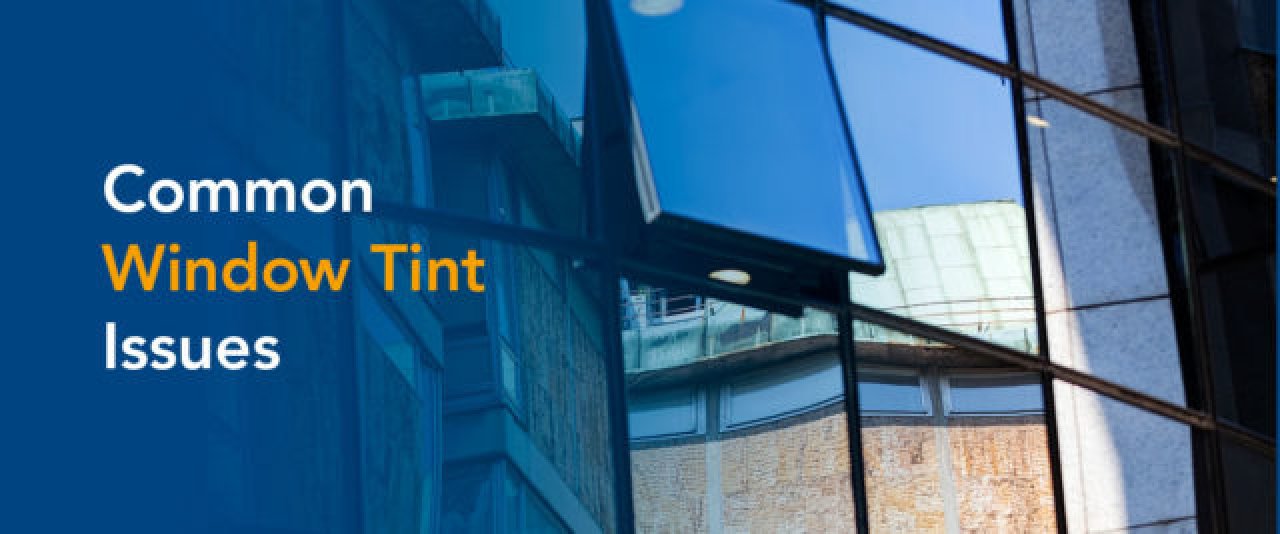Where you can -- and cannot -- put window film
Jul 25, 2023

By: David Smith
Window film, also known as window tint, has many purposes. Window film is typically comprised of many layers with each layer having a unique function to help with everything from blocking light to protecting against scratches.
Some films are darker for shielding against harmful glare, UV rays, and heat. Others are clear and intended to offer protection from damage. And some options are purely decorative to enhance the appearance of the glass itself.
No matter what type of window film you are working with, knowing where it can and cannot go is crucial for reaping the many benefits of these products.

When a professional applies window film to the appropriate surfaces, it can be long-lasting and have many advantages. The following are various places you can put window tint to block the sun or protect against damage. See your manufacturer’s warranty for full details.
Where You Can Put Window Film
Automobiles
Sunroofs
A sunroof is a desirable feature of many modern cars. However, direct sunlight beating down on the driver and passengers can be unpleasant. Having a professional add window tint to the glass helps reduce the UV rays and heat entering the car and makes for a more comfortable experience.

Factory Tinted Windows
Many vehicle manufacturers use glass tinted with pigments for the side windows in vehicles. If you are interested in enhancing the look of your vehicle or adding a protective layer to the glass, a professionals can apply window film to factory window tint without damaging the surface. Window tint can also reduce glare and make it easier to see while on the road.
Rear Windows
Just like the side windows of a car, you can also use window film for rear window. Rear window tint can give a car added privacy and help with temperature control. Often consumers are worried about the rear window defrosters, Madico window tint can safely be applied overtop without damaging these windows.
Homes and buildings
Homes
Single- or Dual-Pane Glass
Window film is an excellent choice for both single- and dual-pane windows in your home. Dual-pane glass utilizes two pieces of glass with air space between them for added insulation. However, whether your home has single or dual-pane windows, the application of window film can enhance privacy and temperature control significantly.
Bedrooms: Window film in the bedroom can be particularly beneficial. It can prevent people from looking inside, offering much-needed privacy without the need for blinds or curtains. Besides, specific types of window film can block UV rays, thereby protecting you from potential skin damage and preventing your furniture and decorations from fading.

Bathrooms: Bathrooms can greatly benefit from window film for the sake of privacy. The film creates a blurred or frosted effect, obscuring visibility from the outside. It also allows natural light in without sacrificing seclusion.
Smooth Glass
When it comes to applying window film, smooth glass surfaces are best. Irrespective of the window’s size, from floor-to-ceiling windows to small sidelights beside a door, a professional can easily add a layer of film. The only key requirement is the absence of texture or damage on the surface.
Buildings
In commercial buildings, the scope for window film extends beyond privacy and moves into energy efficiency and cost savings. By controlling the solar heat gain, window film can help regulate indoor temperature, leading to reduced energy usage.
Single- or Dual-Pane Glass
Much like in homes, single- or dual-pane glass in buildings can also benefit from window film application. Large commercial buildings often use vast expanses of glass, which can let in substantial amounts of heat and light. Window film can help manage these factors, reducing glare and potentially decreasing air conditioning costs during warmer months.
Smooth Glass
Again, similar to residential use, smooth glass surfaces in buildings are ideal for window film application. The application process is straightforward and can be completed with minimal disruption to the building’s daily operations.

Where You Cannot Put Window Film
Over Other Window Films
When working with window tint, you cannot add multiple layers to the same area. If a window already has a film on it, you must remove it before applying anything new. The adhesive on the film clings to the glass and not other films. Layering can make the glass hard to see through
Damaged Glass
Whether the glass is cracked or chipped, damage to the surface will interfere with the film’s bond, and the product will not stick without bubbling. Putting window tint over blemishes in the glass can impede your vision and leave the window looking unsightly.
Broken or failed window seals
Windows with preexisting seal failure are not recommended to have window films applied. Since the window has moisture between the panes of glass, this moisture can interfere with the light that is transmitted or absorbed by the glass leading to a glass breakage. It is always best to replace a window with seal failure before applying film.
Panels With Low-E Coatings
A low-emissivity coating, commonly called a Low-E coating, is a thin, transparent layer added to glass to reduce infrared and ultraviolet light from passing through.
If the Low-E coating faces the air space between the panes of the windows, you can add a window film to the room-side surface without interfering with any other benefits.
If the coating is on the interior surface of the window, it is best to skip adding window film entirely to avoid cutting down or eliminating heat loss reduction provided by the Low-E layer.
Plexiglas and Acrylic Windows
Plexiglas and Acrylic windows are more examples of places where you cannot put window film. Whether they are room dividers or standard windows, the adhesive on the film can interact with the plastic and leave unsightly bubbling. Applying tint to plastic can also create a permanent bond, leaving you unable to remove the film in the future. The removal process could even damage the window. Madico manufactures a special clear base layer film that must be applied before applying a solar or decorative film to plexiglass and acrylic windows.
Wired, Textured, or Patterned Glass
Whether the glass itself is textured or has ornamentation such as paint or vinyl graphics, do not add window tint to surfaces that are not perfectly smooth. Uneven surfaces are an excellent example of where not to put window film. Surface texture or damaged surfaces can leaving behind bubbles or other imperfections when applying film that make the window challenging to see through.
Madico Window Film and Benefits
At Madico, we offer window film for the best experience, whether you’re on the road or relaxing at home. The following are our three primary categories for window tint and the many benefits of each type.
Automotive
Studies have shown an increased risk of skin cancer for people who spend a lot of time driving. The standard windows in cars do not protect against dangerous UV and UVA light.
Adding Madico’s automotive window film to your vehicle offers the following advantages:
• UV protection
• Temperature control
• Reduced glare
• Windshield protection
• Improved privacy
Residential
People are always looking for new ways to save money on their energy bills. The U.S. Department of Energy states that Americans use about 30% of energy to heat and cool buildings, and windows are the primary culprits for energy loss.
Adding a Madico window film to your home’s windows can help save energy by absorbing and reflecting as much as 86% of the sun’s heat. Additional benefits include:
• UV protection
• Temperature regulation
• Decorative touches
Commercial
Beyond automotive and residential options, Madico also offers architectural window films for commercial buildings. Consider these advantages of using our commercial tint:
• Energy savings
• Fade protection
• Increased safety against broken glass
• Temperature control
• Sophisticated appearance
Find a Window Film Dealer and Installer Near You
Once you understand where you can put window film to reap its many benefits, it is time to find a professional dealer and installer near you.
Window films by Madico offer many solutions, from shielding against the sun’s harmful rays to regulating a building’s temperature. No matter your goals and requirements, we have film to accommodate your desired finish.
Ready to transform your windows? Find a Madico window film dealer near you today!



